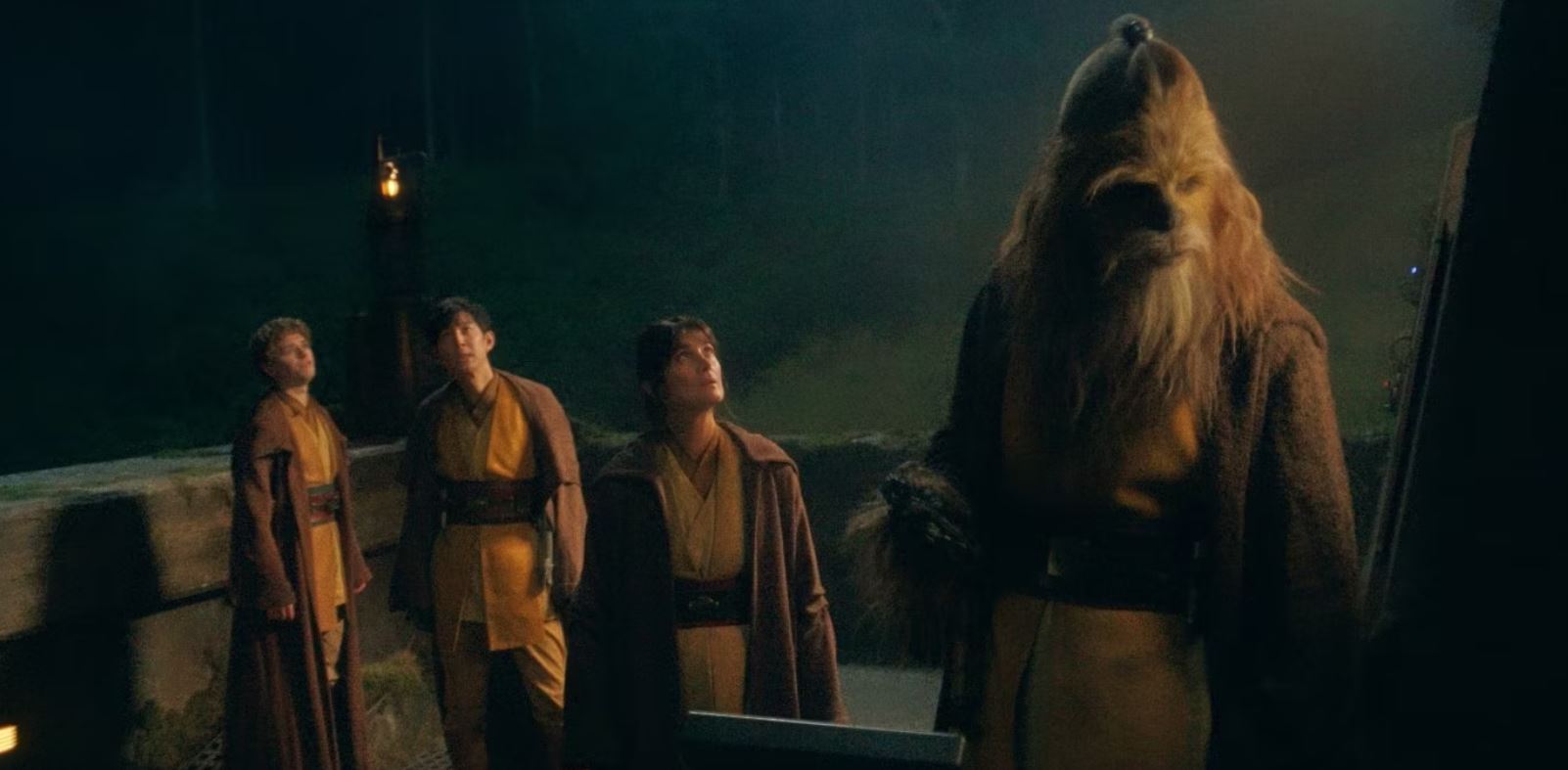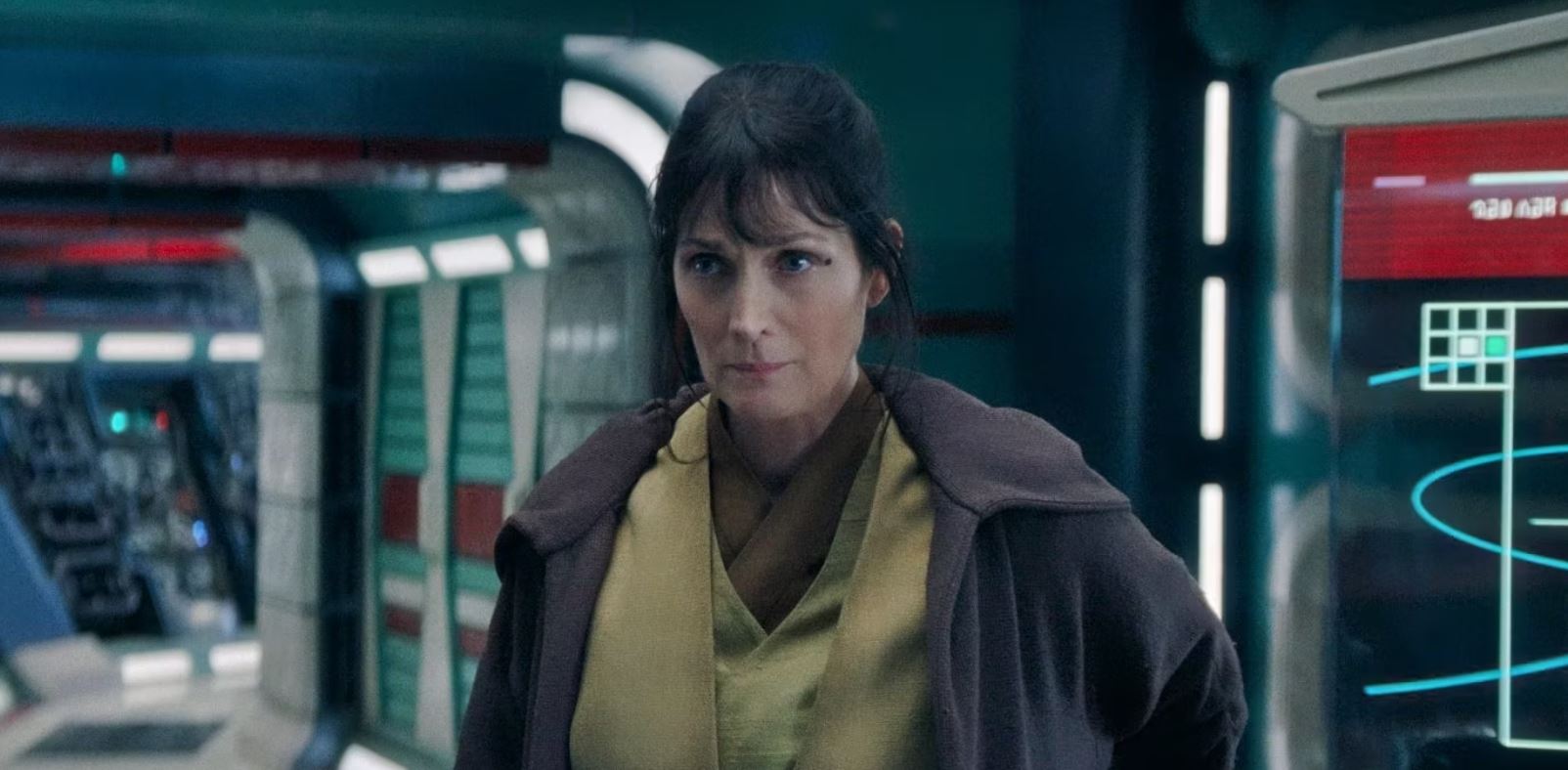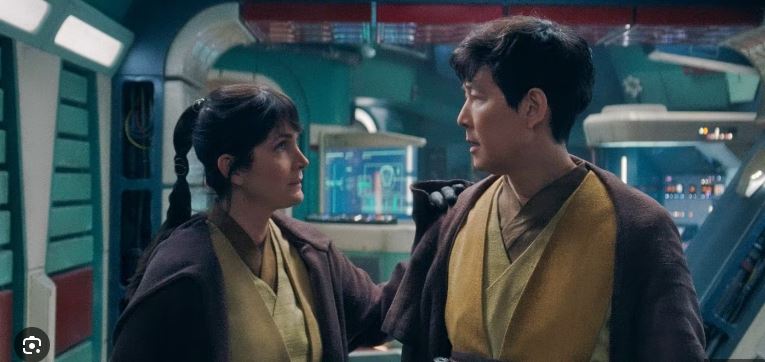After spending last week’s episode exploring Sith philosophy, the latest installment of The Acolyte, Episode 7, “Choice,” takes a closer look at the personalities of the series’ main Jedi. Leslye Headland’s prequel show has been teasing the importance of the four Jedi stationed on Mae and Osha’s (Amandla Stenberg) homeworld of Brendok since the beginning, but Episode 7 finally provides fans of The Acolyte with clearer insights into the nature of each character’s younger self. The brash impatience of Master Torbin (Dean-Charles Chapman) as a padawan is on full display, as is a surprising amount of passion from Lee Jung-jae’s young Master Sol. Yet, of all four Jedi, it is Carrie-Anne Moss’s Master Indara who ultimately demonstrates the most restraint, demonstrating how the first Jedi to be killed in The Acolyte isn’t as bad as she may have initially seemed.
The episode rounds out the flashback sequence first begun in Episode 3 by presenting those same events through the eyes of the Jedi, whose role on Brendok quickly escalates from collecting samples in search of a Force vergence to actively attacking Mother Aniseya’s (Jodie-Turner Smith) coven of The Acolyte’s Force witches. Sol’s insistence on protecting Osha from what he views as a dangerous force sect demonstrates how the Jedi’s fear of what they cannot understand quickly causes the situation to get out of hand, ultimately resulting in Torbin’s reckless attempt to take both twins to Coruscant in order to investigate their unique parentage. In contrast, Moss’s Master Indara remains calm and objective throughout the episode, proving that she at least tried to handle the incident responsibly.
‘The Acolyte’ Episode 7 Proves Master Indara Isn’t To Blame for the Brendok Tragedy

In a broad sense, Master Indara is not entirely blameless for the Brendok incident. As leader of the Jedi team sent to the planet to investigate its unexpectedly resurgent life, it is Master Indara who inadvertently leads the four Jedi into contact with Mother Aniseya’s coven, but Episode 7 demonstrates that Master Indara also attempts to prevent the tragedy that the Jedi’s presence causes. Although Indara’s appearances to the coven in Episode 3 paint her as an almost toneless, stiff aggressor, this week’s release of The Acolyte proves there was a lot more going on behind the scenes. As opposed to her padawan and Master Sol, Indara doesn’t succumb to her emotions, instead using cold reasoning and official Jedi procedure to try and keep a respectful distance from Osha’s coven.
When Sol first reports his discovery of the twins, Indara refuses to jump to any unproven conclusions. Instead, she takes his suggestion of testing The Acolyte’s Osha and Mae as an opportunity to contact the Jedi Council for guidance, and she accepts Mae’s ascension markings as a potential custom of the coven’s culture rather than a sign that the girls are in immediate danger. Moreover, once the girls are tested and the Jedi Council has rejected their results, Indara accepts this decision and doubles down on continuing the team’s former mission. Her grace in the face of unexpected developments emphasizes Indara’s open-mindedness and reliance on solid reasoning, illustrating how she wasn’t the member of the team to instigate the destruction of Mother Aniseya’s coven.
‘The Acolyte’ Episode 7 Makes Indara a Saint Compared to Sol

Given Indara’s prominent role in Episode 3 and Mae’s decision to kill Moss’s Jedi Master first, it felt as though The Acolyte was setting the character up for a more villainous role in the destruction of Mae and Osha’s home. Indara’s rigid demeanor suggests she could possess the same moral inflexibility of The Acolyte’s other Jedi, like Yord, making her susceptible to a hardline philosophy that would have endangered the culture Indara considers strange even in Episode 7. Yet, in another meaningful twist, The Acolyte’s latest flashbacks present Indara’s firm convictions in opposition to the impulsive actions of Jedi Master Sol, establishing Indara as Brendok’s voice of reason while her teammate actively spreads fear throughout their mission.
Throughout The Acolyte Episode 7, Indara’s attempts at caution are frequently overruled by Sol’s unfounded insistence that both the Jedi and the twins are in danger. His concerns prompt Indara’s team to interrupt the ascension ceremony before receiving word from the Jedi Council, and his belief that the Jedi need to stick together as a team interferes with Indara’s initial plan to approach Aniseya alone to appear non-threatening. It is also Sol’s persistence in getting the twins tested–which Indara at first assumes is just a clever ploy to buy the Jedi time to contact the council–which results in the revelation that Mae and Osha are products of the force vergence. This revelation is what prompts Torbin to go rogue and confront the coven, implicating Sol as the true cause of Brendok’s subsequent suffering in The Acolyte.
‘The Acolyte’ Establishes Master Indara as a Morally Gray Jedi

Unfortunately, Sol’s fearmongering and Torbin’s carelessness soon force Moss’s Jedi Master to have a more direct hand in Brendok’s tragedy. Once Sol mistakes Mother Aniseya’s attempt to protect Mae as a sign of aggression, he stabs the twins’ mother with his lightsaber, prompting the coven’s surviving members to seize control of Master Kelnacca’s (Joonas Suotamo) mind and set the Jedi against one another. Indara arrives just in time to save Sol and sever the witches’ connection to The Acolyte’s Wookie Jedi, but the disconnection also abruptly ends the lives of every witch connected to their spell. Indara’s shocked gasp indicates she likely didn’t know her force technique would kill the coven’s remaining witches, and the circumstances of Indara’s questionable decisions in Episode 7 prove she is far from one of The Acolyte’s true villains.
Moss’s Jedi Master only kills the coven when she is attempting to protect her teammates from the witches’ magic, and her teammates only put themselves in danger when they disobey her wishes to not insert themselves into the coven’s community in the first place. When Indara ventures further into ethically precarious waters by lying to the council about what really transpired on the twins’ homeworld, this decision is also not made for unsympathetic reasons. Rather than trying to duck accountability for the death of the coven, Indara insists that Sol must lie about Mae’s fire in order to preserve Osha’s faith in the Jedi Order. She emphasizes that killing the girl’s family and childhood dream in a single night would be too cruel, demonstrating that Indara’s darkest actions in The Acolyte come from compassionate places.
Far from the cold, unfeeling Jedi Master that Indara could have been, The Acolyte Episode 7 proves that Carrie-Anne Moss’s peacekeeper is more sympathetic than she first appears. A patient and objective member of the Order who attempts to balance her mission with compassion and protocol, Indara’s cooler head ultimately fails to prevail against Master Sol’s fears and Torbin’s restlessness, drawing the Jedi into a confrontation at the core of The Acolyte’s narrative. In order to survive this ordeal, Indara engages in questionable actions that ultimately lead dozens of witches to their deaths, but Indara’s justification for these actions is consistently to look out for the well-being of those around her. Moss’s character, therefore, offers one more example of a Jedi Master torn between damning and redeeming qualities, underscoring the series’ dedication to portraying the Order’s complicated morals ahead of next week’s thrilling finale.
